Teenage tyrannosaurs gorged on dino 'drumsticks,' 1st-of-their-kind fossils show
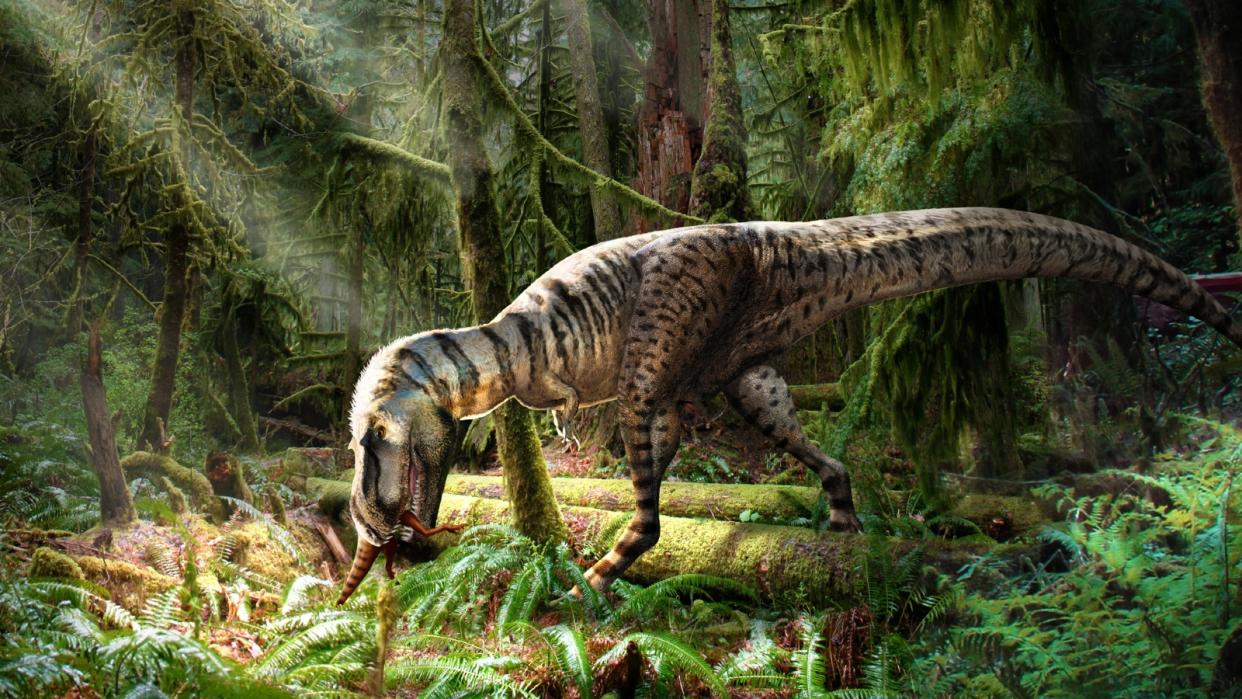
- Oops!Something went wrong.Please try again later.
Paleontologists in Canada have uncovered a first-of-its-kind fossilized meal after finding dinosaur "drumsticks" in the belly of a "teenage tyrannosaur." The unique fossils are the first direct evidence that these apex predators switched up their diets from early years to adulthood, a new study shows.
Researchers discovered the partial remains of the tyrannosaur — a group of large theropod dinosaurs that includes Tyrannosaurus rex — in 2009 within Dinosaur Provincial Park in southern Alberta.
The exquisitely preserved fossils belong to Gorgosaurus libratus, which roamed what is now Alberta and Montana between 76.5 million to 75 million years ago. These predators grew up to 29.5 feet (9 meters) long and weighed around 6,600 pounds (3,000 kilograms), according to an email statement from the researchers. The bones date back to 75 million years ago.
However, this individual likely only weighed up to 770 pounds (350 kg), suggesting it was somewhere between 5 and 7 years old when it died — equivalent to teenage years in humans, joint study lead author Darla Zelenitsky, a paleontologist at the University of Calgary, told Live Science.
When the researchers analyzed the fossils, they discovered small toe bones protruding from the tyrannosaur's rib cage. Upon closer inspection, they found two complete pairs of smaller hind legs where the predator's stomach would have been. The detached legs belong to Citipes elegans, a bird-like dinosaur the size of a dog, which were likely torn clean off the unlucky creatures' bodies.
Related: 'Frightful' never-before-seen tyrannosaur might be the 'missing link' in T. rex evolution
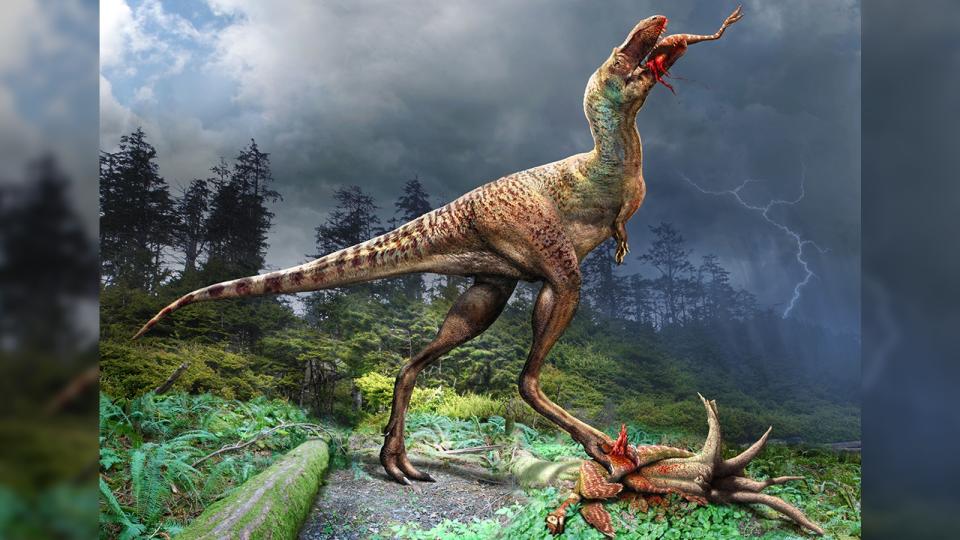
Scientists have previously found preserved prey remains within the stomachs of other meat-eating dinosaurs and the fossilized final meals of plant-based dinosaurs. But this is the first time anything has been found in the guts of tyrannosaurs, Zelenitsky said. This makes the new find "really exciting," she added.
The researchers published their findings Dec. 8 in the journal Science Advances.
The new fossils have given researchers their first glimpse of "what was on the menu for juvenile tyrannosaurs," Zelenitsky said. "Until now, we could only speculate."
Teeth marks left behind on the prey of adult tyrannosaurs previously revealed that the adult predators hunted big prey, such as armored herbivores and duck-billed dinosaurs. However, the younger predators went after smaller prey, likely because juvenile tyrannosaurs were much smaller and slimmer than adults, and had narrower skulls and jaws. This was previously theorized but has not been proved until now.
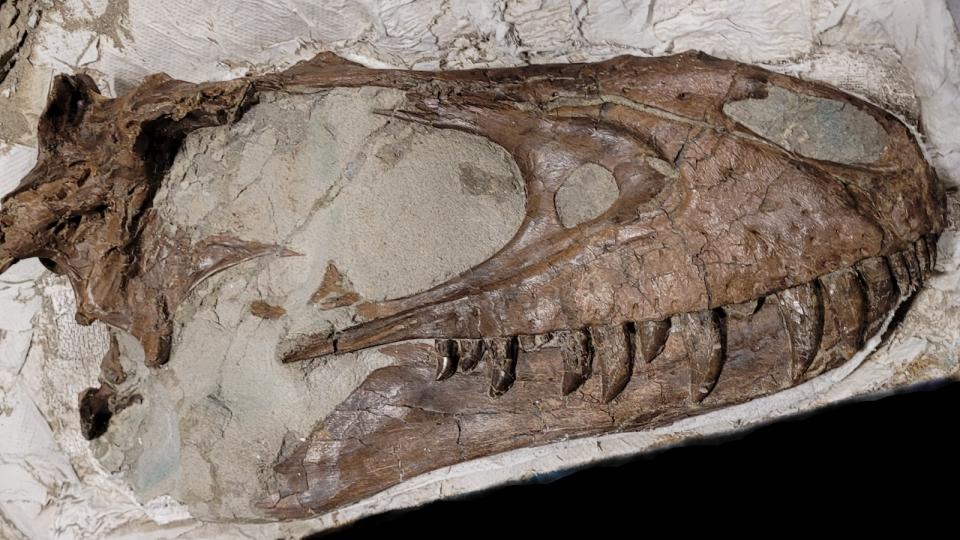
The fossilized meal also reveals new information about Gorgosaurus' prey.
Until now, C. elegans was only known from foot bones. The new fossils include the only known leg bones for the species and are also the "highest quality fossils we have of this species," Zelenitsky said. The team plans to study the limbs in greater detail in the future.
The tyrannosaur may have only eaten the creatures' legs because they would have been the meatiest, therefore most nutritious part of the tiny dinosaurs, Zelenitsky said. "Gorgosaurus teenagers clearly had an appetite for drumsticks," she joked.
Related: Tyrannosaurs bit each other's faces in dino fight clubs
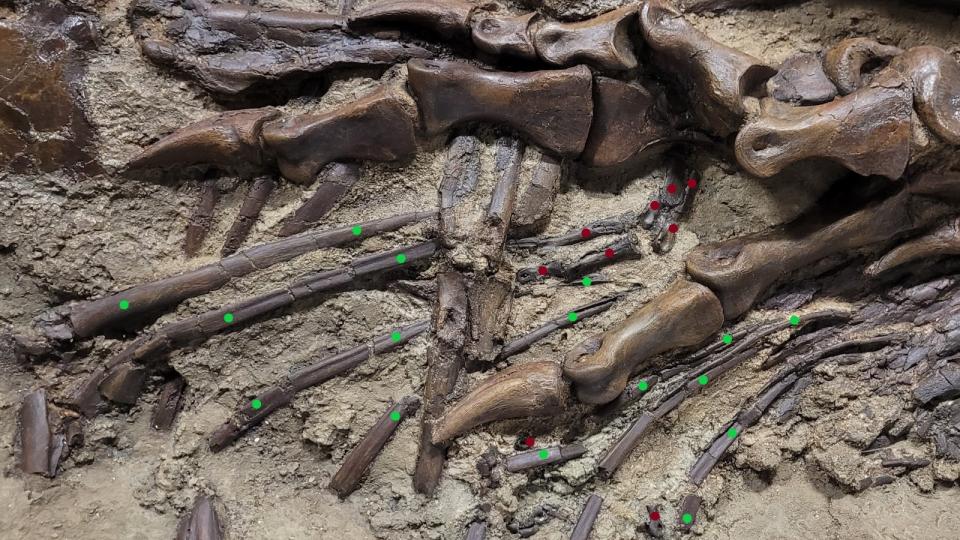
The researchers also noticed that the two sets of legs were in different states of decomposition. "One pair was further back in the stomach and the other was further forward," Zelenitsky said. The ones nearer the back appear to have been partially digested before the Gorgosaurus died.
By looking at the decomposition of prey bones from modern reptile stomachs, the researchers predict that the meals were consumed within hours or days of one another, suggesting that tyrannosaur teenagers had a healthy appetite — perhaps unsurprising considering how large they grew.
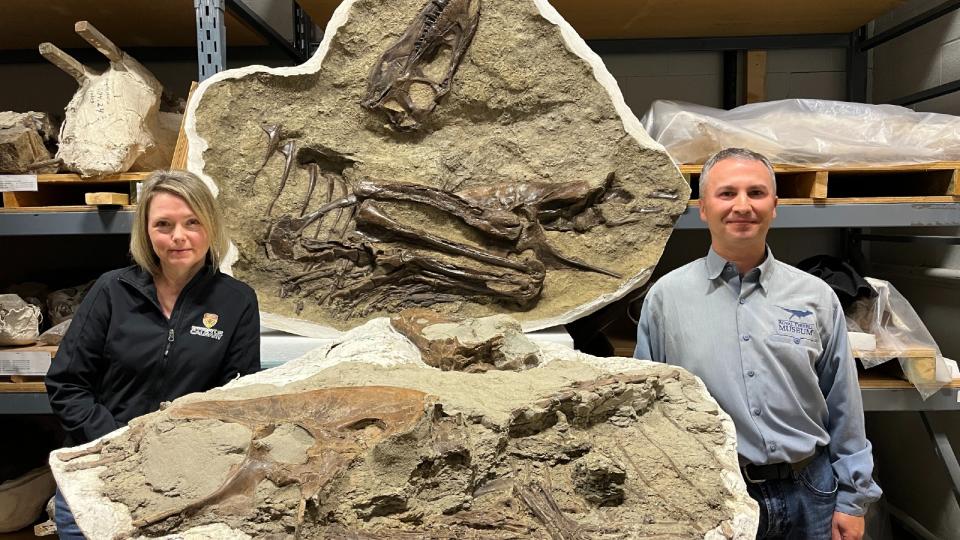
C. elegans was "probably an abundant prey item at the time," but the juvenile predator may have also eaten other small, bird-like dinosaurs, Zelenitsky said. "It is also possible that they could have been hunting anything smaller than themselves," she added.
related stories
—Massive bulldog-faced dinosaur was like a T. rex on steroids
—'Bold theory' that Tyrannosaurus rex is 3 species gets stomped to pieces
—Giant meat-eating dinosaur had a fancy skull and wee arms like T. rex
The researchers are unsure exactly when Gorgosaurus switched from hunting petite prey to hefty herbivores, but Zelenitsky said it may have happened at around 10 to 11 years old, which is around halfway through a Gorgosaurus' lifespan.
The team suspects that most other tyrannosaurs had similar if not identical feeding behaviors in their adolescent years. However, bigger species like T. rex may have switched to hunting larger animals at an earlier age because they would already be massive enough to take down the bigger prey.

